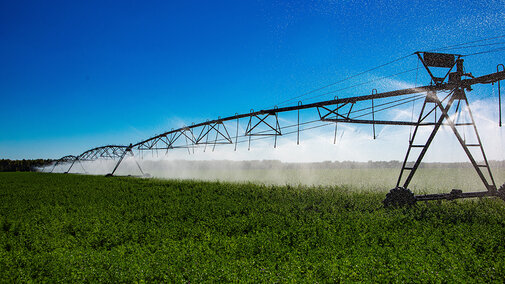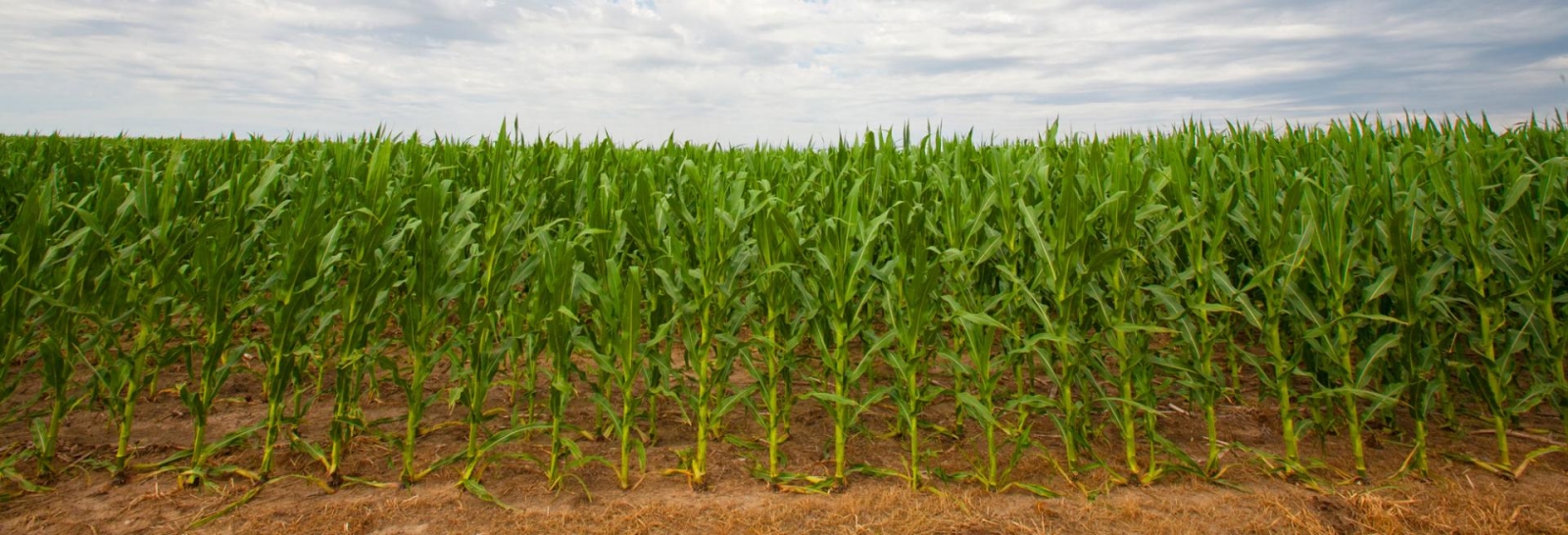Irrigating Forages
Forages vary greatly in water-use efficiency, defined as pounds of forage produced per inch of water applied. In general, warm-season (C-4) forage crops are more water-use efficient than cool-season (C-3) crops. Further, annual forages use water more efficiently than perennial forages. So, legumes — like alfalfa — tend to be less water efficient than grasses.
When moisture is plentiful, water-use use efficiency for warm-season annual sudangrass and sorghum-sudangrass hybrids ranges from 2.5 to 3.5 inches of water per ton of yield. Efficiency of cool-season oats is estimated at 4.5 to 5.5 inches of water required per ton of production. Comparatively, alfalfa needs 5 to 6 inches of water per ton or cutting.
Switching from harvesting corn as dried grain to corn silage can also increase overall irrigation water use efficiency, since the silage corn can be harvested at the R4 dough stage, or 30-40 days earlier than traditional grain harvest. Silage yields can peg 28 tons per acre while lowering overall total water usage by 7 inches per acre.
Where water supplies may be restricted, millet may be the preferred forage option for improving water use efficiency. Although potential total biomass production of millet will likely be less than other drought-tolerant forage options. In UNL forage research at North Platte, millet produced 2 tons per acre with 2.22 inches of irrigation water, while applying more than 4.62 inches of irrigation water did not increase millet forage yields above 3.5 tons per acre.
More information including “Forage Production with Limited Irrigation” (Nebraska Extension NebGuide G2012) is available on CropWatch or UNL Beef.
Storing Silage
Corn silage harvest may seem like a long way off, but preparation for a successful harvest begins now. Improper silage storage and fermentation can result in losses up to 20% prior to feeding. Plan your storage now to keep excessive storage losses from happening to you.
Preventing oxygen from entering your silage should be a top priority when considering silage storage. Bagged silage is a versatile option that allows the storage location to move year to year and comes with a build in oxygen barrier but can carry a high price tag and may not be appropriate for large harvest amounts. Placing the silage in a bunker is another that can increase oxygen exclusion, but make sure to check these structures for cracks and repair any that are found to maintain their integrity. If silage is a feedstuff on your operation, the reduction in losses that a permanent structure paired with covering the pile provides can offset the costs when spread out over several years.
Silage piles are the more traditional approach and can allow for greater volumes of silage to be stored in a smaller area without the cost and permanent nature of bunkers. Oxygen exclusion in piles that lack a permanent structure can be enhanced with some planning. Before harvesting, line the sides with bales and place oxygen-limiting plastic down the sides and for several feet under the bottom to seal the sides of the pile. At a minimum, placing plastic on top of the pile is an investment worth the time, labor, and money. By covering the pile, we can reduce oxygen from moving into the pile from the top and reduce precipitation exposure.
Corn silage is a valuable feed resource and keeping oxygen out of your silage requires planning now. Pick an appropriate location for harvest and feed out success and store correctly to minimize feed losses.
Adding Grass to Thinning Alfalfa
Do you have a thinning and low producing alfalfa stand but are not quite ready to do a complete reseeding? These stands can be rejuvenated by interseeding grasses to increase hay production in subsequent years or to convert them to pasture.
Most alfalfa fields start to lose stand and production potential after cutting hay for several years. Orchardgrass is the grass most commonly interseeded into alfalfa, but other grasses like endophyte-free tall fescue, smooth or meadow brome, festulolium, and wheatgrasses also can be used. If the field will be used as pasture, a mixture of several grasses may be best since it adds diversity to your animals' diet.
Whether irrigated or dryland, interseeding after a mid-August to early September hay harvest can be excellent timing. There is always some risk for dryland fields because several rains will be needed to start the new grass seedlings. The seeding should be done as sone as that August or early September harvest is complete. If your alfalfa is relatively thick, you probably will need to take another cutting in about four weeks, or as soon as the alfalfa starts to form a full canopy. This allows sunlight to continue to reach new grass seedlings below the alfalfa.
The seeding rate of the grasses will vary depending on the species that is used and how thick the existing alfalfa is. With orchardgrass for example, as little as 3 lb/acre might be adequate in a relatively thick alfalfa stand or up to 6 lb/acre in a very thin alfalfa stand.
Next spring you will need to judge how well established the new grasses have become. If they seem a little weak, cut hay early to open the canopy for better light penetration.

